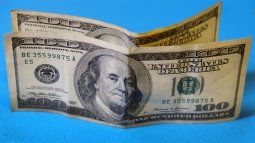The dollar index, which compares the North American currency with a basket of currencies, rebounded strongly in the last rounds and reached 104.09 points, the highest since last March.
The dollar strengthened again at a global level after knowing relevant data for the North American economy. The number of new jobs, at 339,000, far exceeded market expectations by 195,000; In addition, the Labor Department revised the April data upwards and increased the number of new jobs from 253,000 to 294,000. On the other hand, unemployment grew to 3.7% vs. 3.5% expected. These data reaffirmed that the sought cooling off of activity by the Federal Reserve to anchor inflation is not yet significant. Within this framework, the US currency erased the falls it had recorded in recent months after learning that inflation was beginning to slow down monthly in that country. However, market expectations are that the Fed will keep the reference rate unchanged at the next meeting.
The content you want to access is exclusive to subscribers.
The dollar index, which compares the North American currency with a basket of currencies, rebounded strongly in the last rounds and reached 104.09 points, the highest since last March. In this way, in the last month it rose 2.9%. However, the 114.09 reached last September, the highest it reached in two decades, is still far away.


Analysts consulted by Ámbito point out that the strength of the dollar responds to the fact that in recent days it has moved in line with interest rate differentials, given that the United States rate grew more than that of the rest of the world, so the dollar it was appreciated. Likewise, this dynamic responds to a market reading of the relative strength of the US economy compared to the rest of the economies.
From balance they highlighted: “Expectations of a more aggressive monetary policy stance in the United States for the second half of 2023, combined with growing concern over the deadlock on the debt ceiling, have led to a notable appreciation of the dollar in the past month. These expectations were reflected in an average increase of 27.9 bps in the US Treasury bond rates. Furthermore, as a result, the implicit monetary policy rate projected for the end of 2023 escalated to 4.97%, in compared to the 4.41% expected a month ago. This led the DXY index to show an appreciation of 2.9% in the last month. As a counterpart, the currencies of developed countries, such as the euro and the pound sterling, experienced depreciations of 2.7% and 0.1%, respectively, in the period”.
In this line, Thomas Villa, analyst at ConoSur Investments, considered: “Most of the rise in the dollar that we have seen in recent days is attributable to a widening of the differential between the interest rate in the US, which has been rising, and the interest rates in the other relevant currencies, which They did not do it to the same extent. Said rise in the US interest rate is attributable, in turn, to an improvement in the market’s perception of the strength of the US economy, probably fueled by employment data that continued to surprise by its solidity”.
From balance They detailed that “by 2024, the greatest expectations of a global recession should support the dollar, despite the fact that the Fed has finished the monetary adjustment cycle. On the other hand, the exaggerated expectations about Europe’s ability to face the economic slowdown increase the risks towards the euro. Although the ECB continues to signal higher increases due to the high level of inflation, a significant slowdown in growth in the US could bring about a change in expectations”.
As for the Latin American currencies, they continue to be favored by the strong stances that central banks have been maintaining, as well as the positive differentials in real rates compared to the United States.
Source: Ambito




